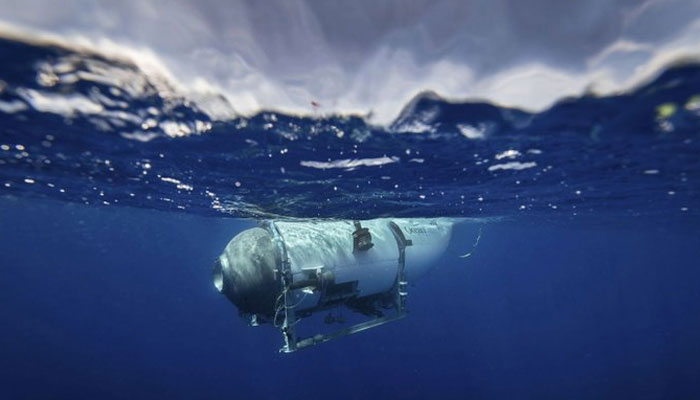12 hours of oxygen left: Sound signals give hope for lost Titan as unrelenting search intensifies
A glimmer of hope emerged when 'banging' sounds were detected by Canadian aircraft near Titan's last known location in Atlantic Ocean
June 22, 2023

As the clock ticks down with only 12 hours of oxygen remaining, rescue efforts are in full swing to locate the missing Titan submersible carrying five passengers.
A glimmer of hope emerged when intermittent "banging" sounds were detected by a Canadian aircraft near the sub's last known location in the Atlantic Ocean. However, the source of the noises remains unknown, adding to the mystery surrounding the situation.
Among those on board the Titan are Stockton Rush, CEO and founder of OceanGate Expeditions, British billionaire explorer Hamish Harding, renowned French diver Paul-Henri Nargeolet, and Pakistani businessman Shahzada Dawood along with his son Suleman Dawood. With every passing moment, their families hold onto hope for their safe return.
The submersible embarked on its journey to the Titanic wreckage at a depth of 12,500 feet but lost contact with its surface ship, the Polar Prince, approximately two hours into the mission. The desperate search operation, involving multinational efforts from the US and Canadian military, coast guard ships, and underwater robots, has now entered a critical stage.
"We have to remain optimistic and hopeful," stated US Coast Guard Captain Jamie Frederick, as experts analyze the multiple "underwater noises" picked up by sonar. While the sounds have sparked optimism, their origin remains unconfirmed. The urgency to locate and rescue the passengers alive is escalating, with time running out and the challenge growing more formidable.
The international response has been swift, with additional assets and personnel being deployed. "There have been multiple reports of noises, and every one of those noises is being analyzed," explained Carl Hartsfield from the Woods Hole Oceanographic Institution. However, the search efforts have yet to yield any concrete results.
Fears arise regarding the sub's condition and potential scenarios. Alistair Greig, a professor of marine engineering, highlights two possibilities: an electrical or communications problem that caused the sub to surface and wait to be found, or a compromised pressure hull resulting in a leak. The latter scenario raises concerns about the passengers' safety.
As the search area expands and resources double, the urgency to locate the missing submersible and its occupants grows. The pressure at the extreme depths of the Titanic wreck site adds to the complexity of the operation. The involvement of specialised equipment, such as a winch system and deep-sea underwater robots, reflects the gravity of the situation.
While awaiting updates on the fate of the Titan and its passengers, the haunting legacy of the Titanic adds weight to the current predicament. The potential risks associated with untested design and operational concerns are raised, following a lawsuit filed by a former director of marine operations in 2018.
With the world anxiously watching, every effort is being made to locate the missing submersible before the dwindling oxygen supply reaches its critical point. The race against time continues as hopes persist for a successful rescue mission.









